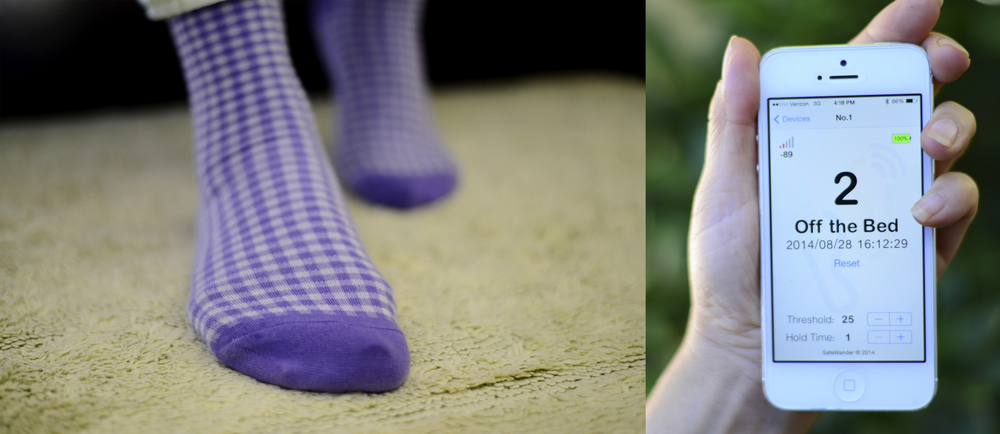15-year-old Designs Pressure Sensor to Help Wandering Dementia Patients

A novel, wearable sensor system created for dementia patients helps to keep them safe when they wander out of bed during the night while also providing relief to their families and caregivers. The system, which connects to a smartphone, is not only innovative, but is also making headlines since it was created by a 15-year-old who wanted to help his aunt taking care of his grandfather, who suffers from Alzheimer’s disease. Kenneth Shinozuka created and tested the device on his grandfather, and it is now available on his website.
The SafeWander system is comprised of a sensor that is worn in a patient’s sock or on the bottom of the patient’s foot, as well as a transmitter and a smartphone app. The sensor is triggered by the patient’s steps onto the floor, since it is able to detect the pressure caused by body weight. When that happens, it sends a wireless signal to the caregiver’s Smartphone.
“One night I was looking after my grandfather and saw him stepping out of bed. The moment I saw his foot landing on the floor, a light bulb flashed on my head. Why don’t I put a pressure sensor on the heel of his foot? Through extensive research and countless prototyping and testing, I finally succeeded in creating an ultra thin, flexible, film pressure sensor that can be worn on the patient’s foot, without causing any discomfort,” Shinozuka explains in his video.
[adrotate group=”3″]
The SafeWander’s prototypes were tested on Shinozuka’s grandfather for six months, who is one of the 36 million Alzheimer’s and dementia patients in the world, and is also among patients (65%) who wanders. In 2013, over 15.5 million caregivers in the U.S. alone provided care valued at over $220 billion to their patients and the disease is the fastest growing health threat in America.
The pressure sensor is the first wearable system for the detection of wandering Alzheimer’s patients, and the teenager believes it represents a reliable, easy to operate, comfortable, portable, and affordable way of reducing the burden of the condition. The system is currently undergoing a larger-scale beta test at several residential care facilities.






